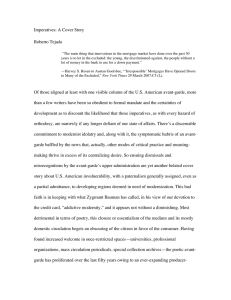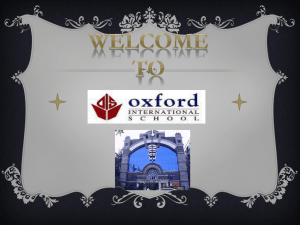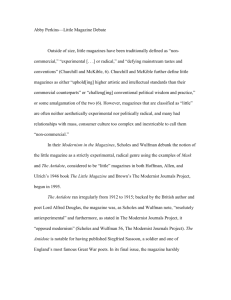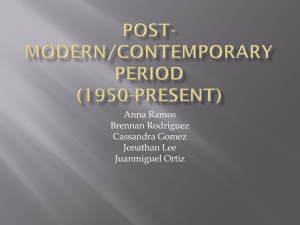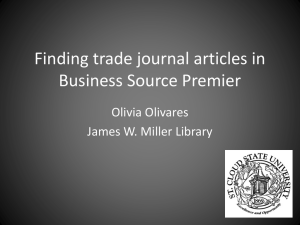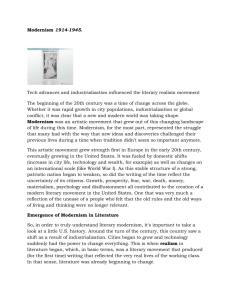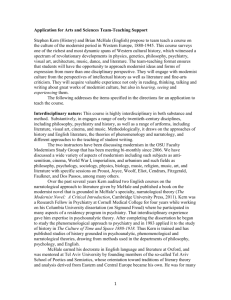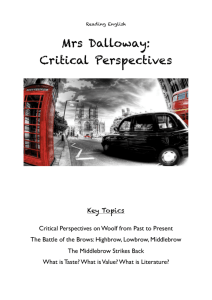print culture, `art` literature and the formation of modernist taste in
advertisement
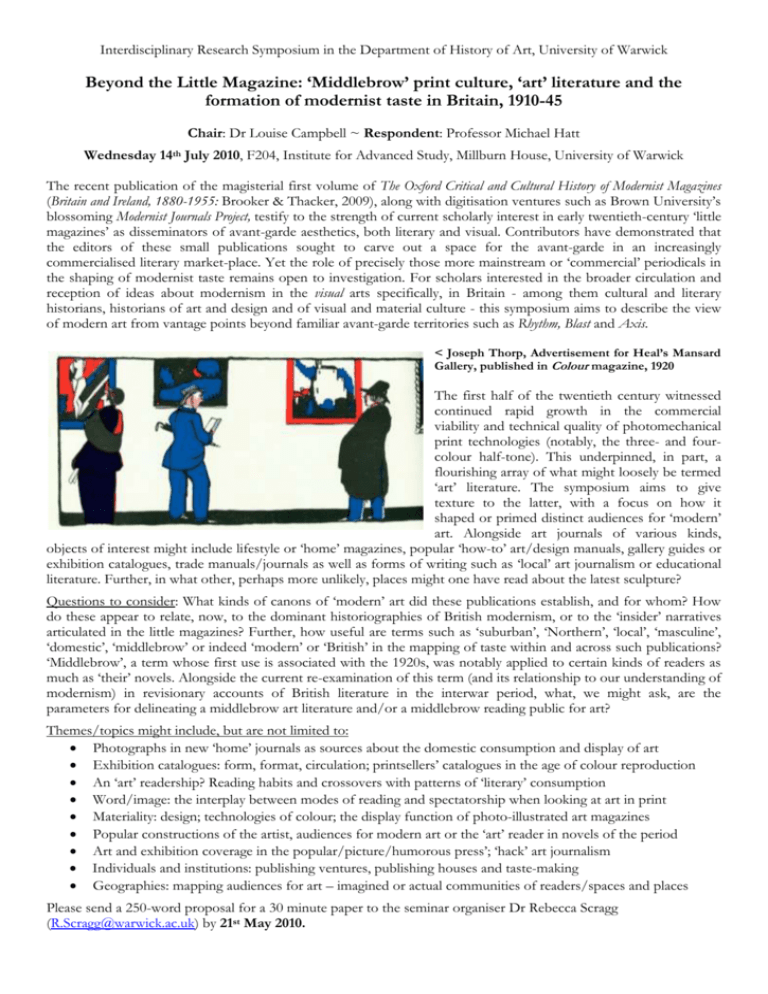
Interdisciplinary Research Symposium in the Department of History of Art, University of Warwick Beyond the Little Magazine: ‘Middlebrow’ print culture, ‘art’ literature and the formation of modernist taste in Britain, 1910-45 Chair: Dr Louise Campbell ~ Respondent: Professor Michael Hatt Wednesday 14th July 2010, F204, Institute for Advanced Study, Millburn House, University of Warwick The recent publication of the magisterial first volume of The Oxford Critical and Cultural History of Modernist Magazines (Britain and Ireland, 1880-1955: Brooker & Thacker, 2009), along with digitisation ventures such as Brown University’s blossoming Modernist Journals Project, testify to the strength of current scholarly interest in early twentieth-century ‘little magazines’ as disseminators of avant-garde aesthetics, both literary and visual. Contributors have demonstrated that the editors of these small publications sought to carve out a space for the avant-garde in an increasingly commercialised literary market-place. Yet the role of precisely those more mainstream or ‘commercial’ periodicals in the shaping of modernist taste remains open to investigation. For scholars interested in the broader circulation and reception of ideas about modernism in the visual arts specifically, in Britain - among them cultural and literary historians, historians of art and design and of visual and material culture - this symposium aims to describe the view of modern art from vantage points beyond familiar avant-garde territories such as Rhythm, Blast and Axis. < Joseph Thorp, Advertisement for Heal’s Mansard Gallery, published in Colour magazine, 1920 The first half of the twentieth century witnessed continued rapid growth in the commercial viability and technical quality of photomechanical print technologies (notably, the three- and fourcolour half-tone). This underpinned, in part, a flourishing array of what might loosely be termed ‘art’ literature. The symposium aims to give texture to the latter, with a focus on how it shaped or primed distinct audiences for ‘modern’ art. Alongside art journals of various kinds, objects of interest might include lifestyle or ‘home’ magazines, popular ‘how-to’ art/design manuals, gallery guides or exhibition catalogues, trade manuals/journals as well as forms of writing such as ‘local’ art journalism or educational literature. Further, in what other, perhaps more unlikely, places might one have read about the latest sculpture? Questions to consider: What kinds of canons of ‘modern’ art did these publications establish, and for whom? How do these appear to relate, now, to the dominant historiographies of British modernism, or to the ‘insider’ narratives articulated in the little magazines? Further, how useful are terms such as ‘suburban’, ‘Northern’, ‘local’, ‘masculine’, ‘domestic’, ‘middlebrow’ or indeed ‘modern’ or ‘British’ in the mapping of taste within and across such publications? ‘Middlebrow’, a term whose first use is associated with the 1920s, was notably applied to certain kinds of readers as much as ‘their’ novels. Alongside the current re-examination of this term (and its relationship to our understanding of modernism) in revisionary accounts of British literature in the interwar period, what, we might ask, are the parameters for delineating a middlebrow art literature and/or a middlebrow reading public for art? Themes/topics might include, but are not limited to: Photographs in new ‘home’ journals as sources about the domestic consumption and display of art Exhibition catalogues: form, format, circulation; printsellers’ catalogues in the age of colour reproduction An ‘art’ readership? Reading habits and crossovers with patterns of ‘literary’ consumption Word/image: the interplay between modes of reading and spectatorship when looking at art in print Materiality: design; technologies of colour; the display function of photo-illustrated art magazines Popular constructions of the artist, audiences for modern art or the ‘art’ reader in novels of the period Art and exhibition coverage in the popular/picture/humorous press’; ‘hack’ art journalism Individuals and institutions: publishing ventures, publishing houses and taste-making Geographies: mapping audiences for art – imagined or actual communities of readers/spaces and places Please send a 250-word proposal for a 30 minute paper to the seminar organiser Dr Rebecca Scragg (R.Scragg@warwick.ac.uk) by 21st May 2010.
